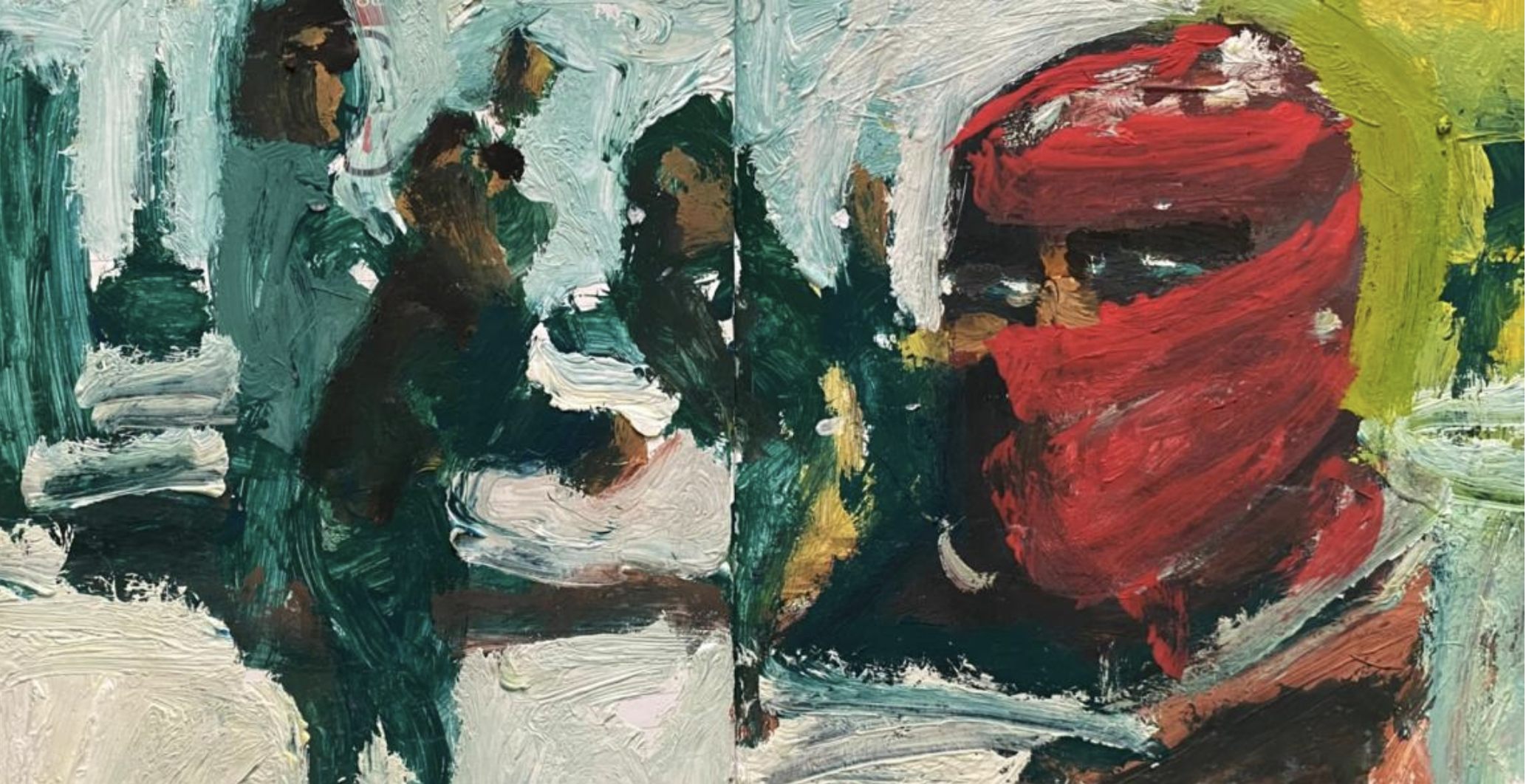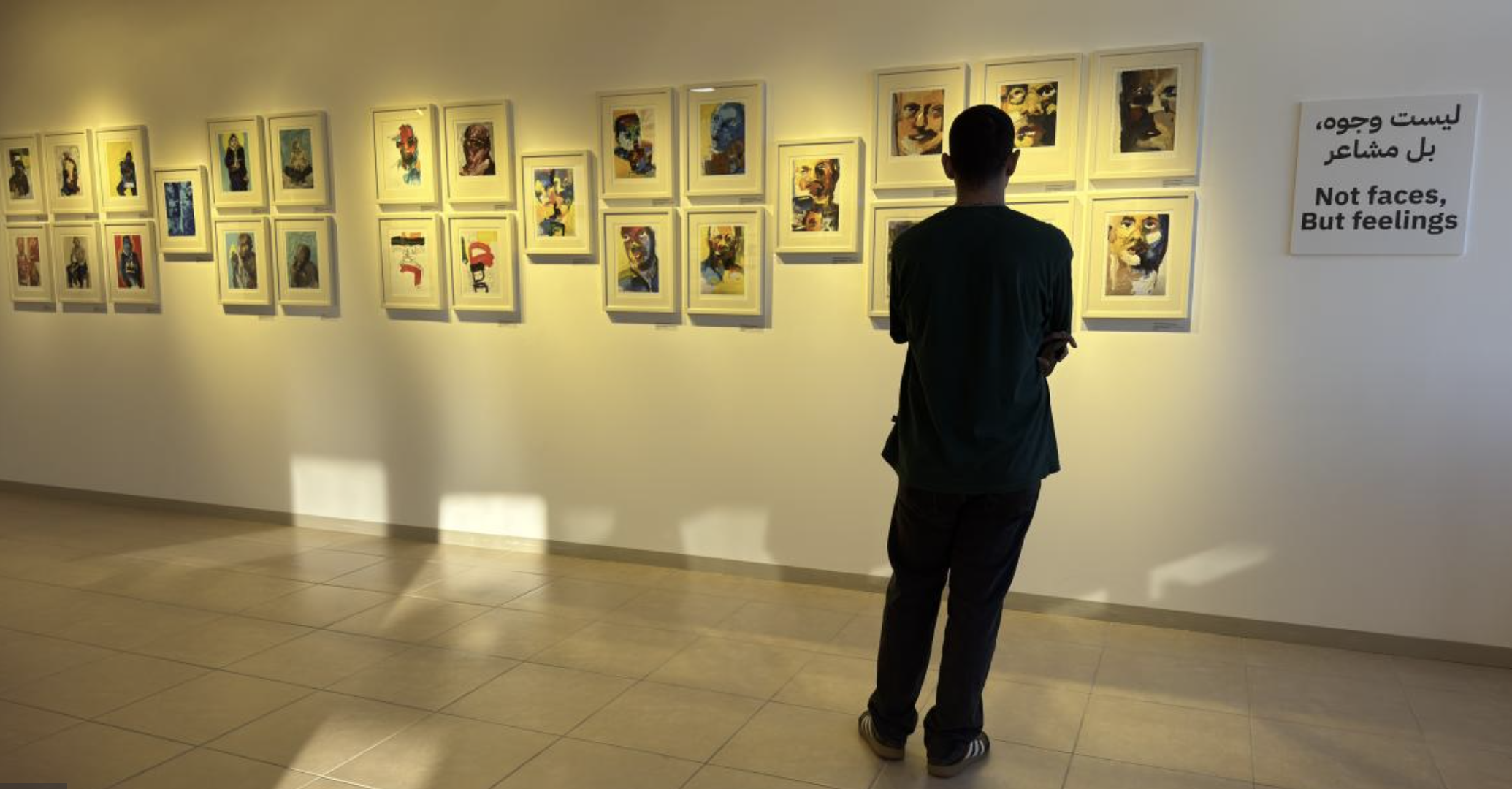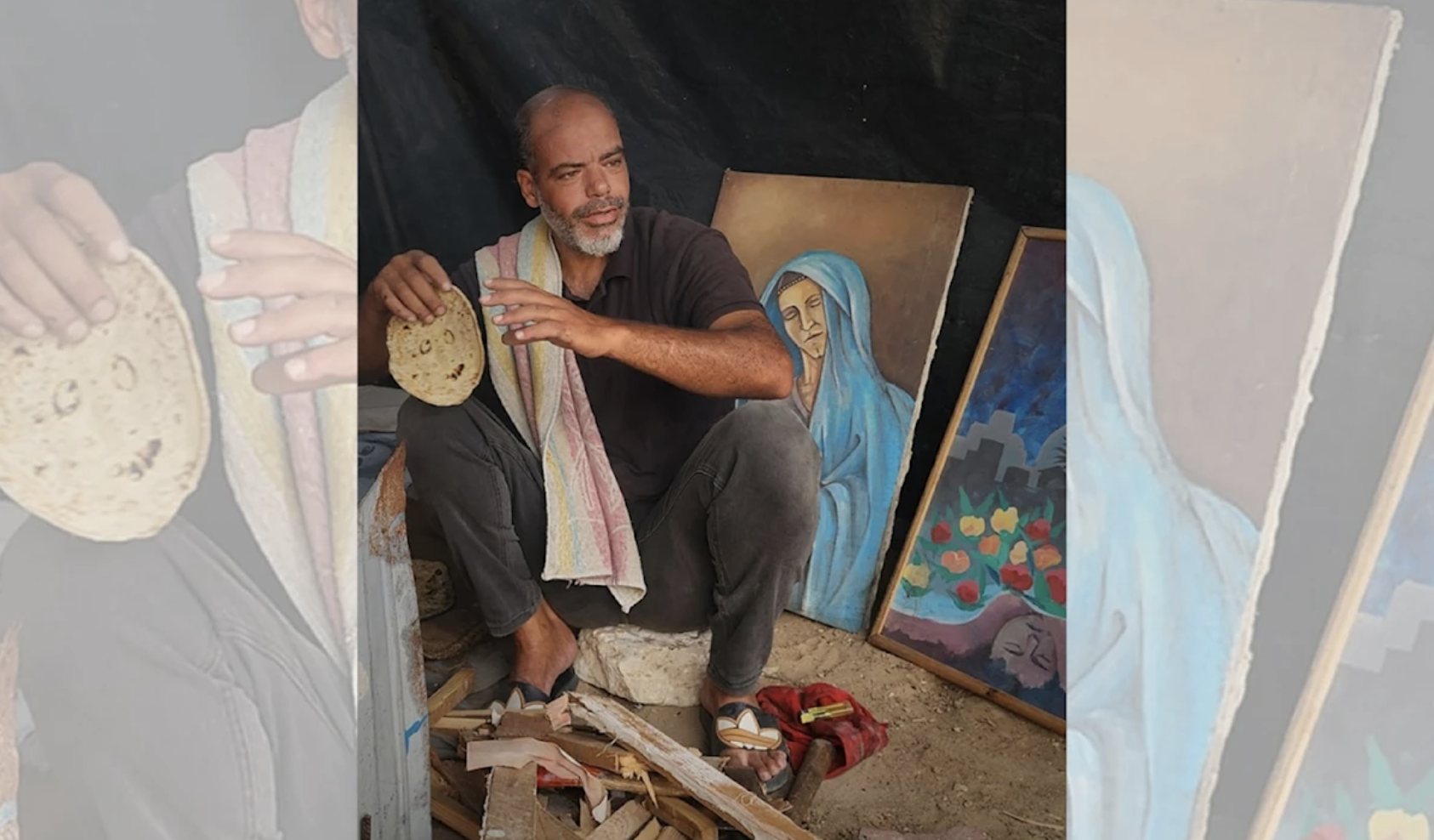Abdul Nasser Amer's Paintings
The Centrality of the Woman Figure Between Symbolic Burden and Lightness
Palestinian art, particularly during the era of resistance art, has often portrayed women as charged symbolic figures. Resistance literature pioneered this depiction, embedding the image of women deeply into Palestinian cultural and semiotic discourse. Mahmoud Darwish’s collection A Lover from Palestine immortalized women as representations of land, beloved, and homeland, while Ghassan Kanafani’s novel Umm Saad presented an iconic image of the resilient, revolutionary woman—a maternal figure often symbolizing the refugee camp.
For decades, these foundational representations dominated Palestinian visual art, frequently associating women with land/nationhood, resistance, or revolutionary symbolism. These depictions imbued women with an aura derived from the sanctity of land, nation, revolution, and resistance, making it difficult to disentangle their image from this symbolic weight. During this period, art rarely portrayed women as autonomous human beings but rather as vessels for symbolic meaning.
This tendency was more pronounced in the works of male artists than female ones, although exceptions existed outside the mainstream resistance art narrative. Over the past three decades, younger artists, particularly women, have worked to liberate the image of women from these symbolic burdens, critiquing and deconstructing the artistic and aesthetic discourse of the resistance era.

Nasser Amer, Untitled, (2021), (2023)
The prominent presence of women in Abdul Nasser Amer’s works, especially his destroyed pieces showcased on ArtZone Palestine, is best understood within this accumulated artistic and symbolic legacy. His paintings present a spectrum of representations of women. When tied to the land or its symbols, they evoke an era that celebrated Palestinian cultural heritage, epitomized by embroidered dresses, olive trees, and other motifs.
Similarly, depictions of women in the context of revolution or resistance recall collective imagery deeply embedded in resistance art, particularly in the works of artists like Mustafa al-Hallaj, Suleiman Mansour, and Fathi Ghabin. However, when women appear in different contexts, such as intimate domestic settings or markets, they are stripped of the symbolic weight tied to land, revolution, or resistance. These depictions do not render women as objects of desire but instead emphasize their humanity.
Amer’s artistic style in these contexts leans toward austerity, focusing on expressive elements evident in body posture and facial features, particularly the intense gaze of the eyes, which hold a captivating centrality in his works. This is vividly seen in a painting featuring a fish seller, where the woman’s sidelong gaze is intensified by the circular eyes of the fish in the bowl before her. Another example is a painting featuring a figure with an upward-turned face and a sharp, triangular tongue juxtaposed with a horse’s head bearing a similarly sharp tongue. This composition suggests a heightened expressive state, augmented by otherworldly elements. Similarly, a painting depicting a bull and a fish conveys this charged dynamic.
One noteworthy piece portrays a woman playing with cats. Here, a Palestinian woman in an embroidered dress sits with Jerusalem in the background. Yet, the domestic courtyard setting diminishes the symbolic charge of the embroidery and the iconic Dome of the Rock. The cats redirect attention to the intimate moment, as the woman closes her eyes, exuding relaxation. The private domestic space and human atmosphere overshadow the symbolic significance of the background and the dress, shifting the interpretive focus to a personal and serene narrative.
Interestingly, all the works destroyed during the genocidal war on Gaza were created between 2021 and 2023. Amer’s recent works exhibit a growing tendency toward austerity in composition, favoring broader color spaces in the background to emphasize the central formations. This shift hints at potential artistic transformations in his vision and style. Whether future works will confirm or challenge this trajectory remains to be seen.
What stands out in Amer’s artistic journey is his consistent aesthetic engagement, striving to free his work from immediate, pressing themes. This reflects a search for tranquility through the artistic process, inviting contemplation of complex emotions interwoven with love, anxiety, mystery, and anticipation—feelings intrinsic to life in Gaza, with all its complexities and existential questions.
Mahmoud Abu Hashhash
A writer and poet based in Ramallah
Published on 27.12.2024


